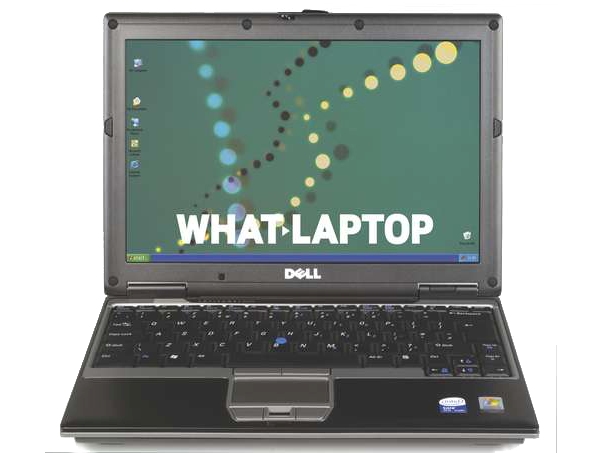TechRadar Verdict
The Dell Latitude D420 is a decent machine that, aside from its build quality, doesn't really stand out. That said, as a mainstay corporate machine it's more than up to the job.
Pros
- +
Solid build
Cons
- -
Disappointing performance
Why you can trust TechRadar
Dell focuses its Latitude laptops at the business user, and the latest iteration, the D420 (£1149 ex. VAT) uses components that are compatible with earlier D Series models. In this way you can use power supplies, even docking stations, from older systems.
The chassis takes a striking new look that in many ways is a hybrid of the IBM ThinkPad and the HP Compaq nc series. Weighing in at 1.5kg, this is a lightweight and portable machine that is up to life on the go.
The build quality of the chassis is impressive with plenty of protection behind the screen. Little details, such as a slightly curved bezel and rubber feet, prevent screen movement and rubbing when in transit, making this a well thought out solution.
Powered by an Intel Core Duo U2500 processor, you'll find this 1.2GHz chip is an Ultra Low Voltage variant that uses 9-watts of power, as opposed to a standard Core Duo which runs at 31-watts. Designed for battery life rather than raw performance, this chip won't handle high- end applications, but for office-based tasks it's more than adequate.
Sadly, battery life didn't quite live up to the mobile image, as under test it only lasted 205 minutes, which is fine for standard use, but we'd like to see more from a frequent traveller's laptop.
Multiple ports
Our review unit came with a docking station, which can be left in the office and comes with a host of ports you're likely to need in an office environment, including the addition of a DVI port, allowing connection to a larger monitor, if you so wish.
The dock is easy to use and really adds to overall productivity. The laptop's screen is a standard 12.1-inch TFT panel, so isn't as bright as a Super-TFT model, but as it's widescreen, it won't take up as much space when being used on a train or plane.
Sign up for breaking news, reviews, opinion, top tech deals, and more.
The keyboard is of a good size and the keys are well spaced and well mounted. That said, we found quite a degree of rattle when typing. While not as sturdy or as comfortable to use as some other keyboards (especially those on Sony VAIOs), it's more than usable. With two sets of mouse buttons, a touchpad and a pointing stick, Dell is taking no chances on the user's preferred navigation mode.
While it may seem a little overdone, the chassis is big enough to accommodate them without too much trouble. You'll even find a biometric fingerprint scanner nestled in-between the lowest set of mouse keys. As it's recessed, it doesn't get in the way when you're typing.
The Dell Latitude D420 is a decent machine that, aside from its build quality, doesn't really stand out. That said, as a mainstay corporate machine it's more than up to the job. Philip Barker & Michael Browne
Tech.co.uk was the former name of TechRadar.com. Its staff were at the forefront of the digital publishing revolution, and spearheaded the move to bring consumer technology journalism to its natural home – online. Many of the current TechRadar staff started life a Tech.co.uk staff writer, covering everything from the emerging smartphone market to the evolving market of personal computers. Think of it as the building blocks of the TechRadar you love today.
